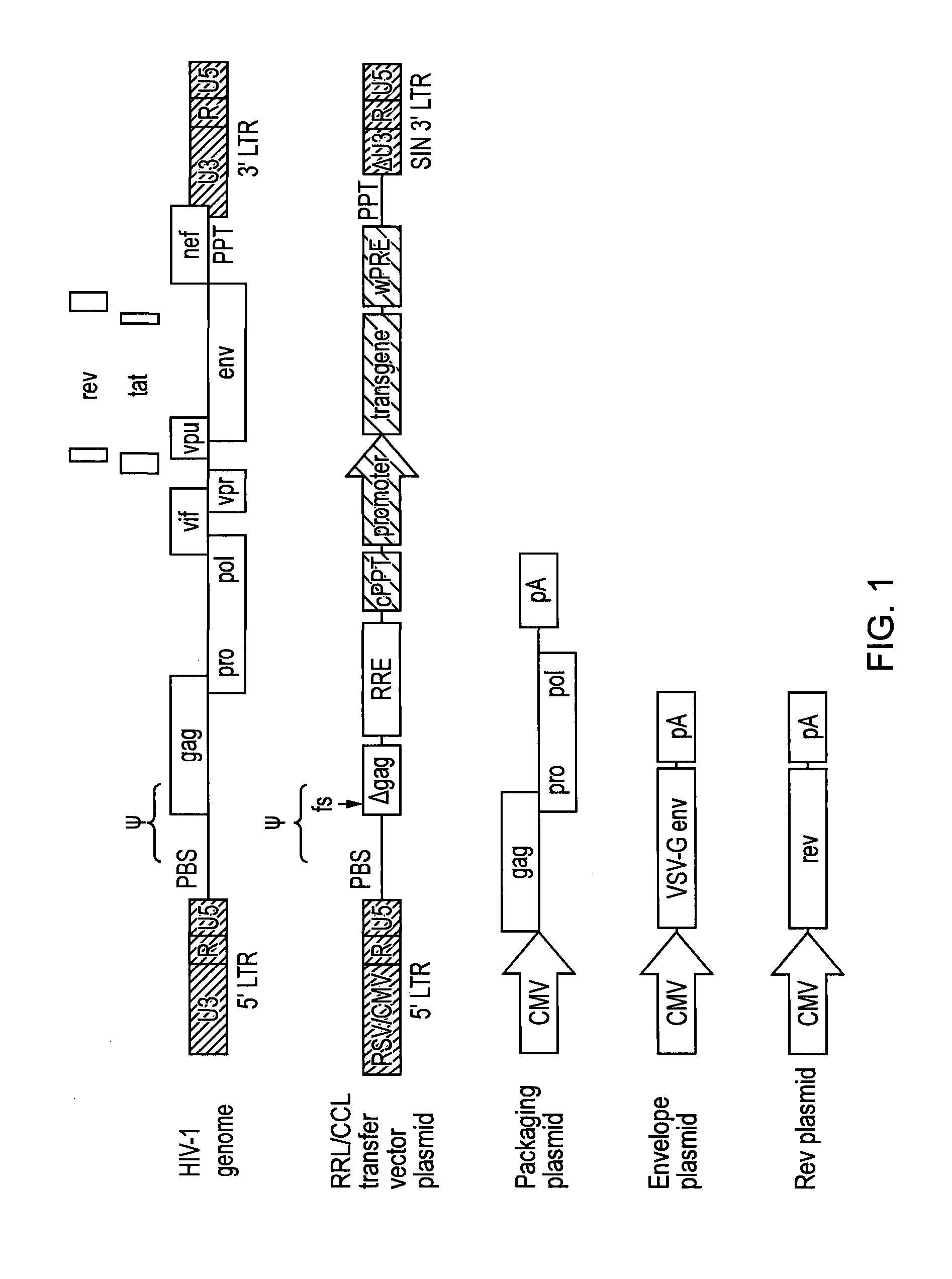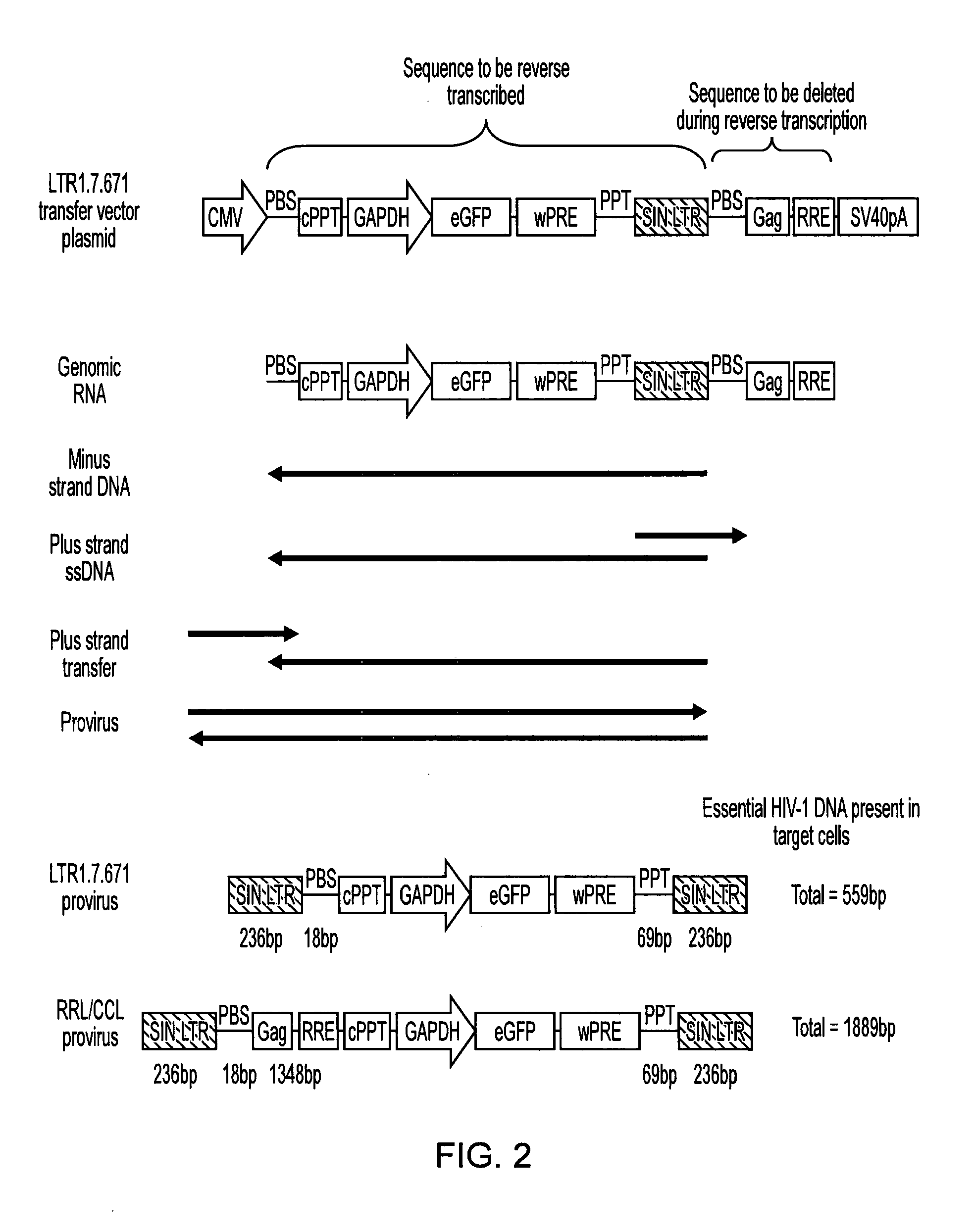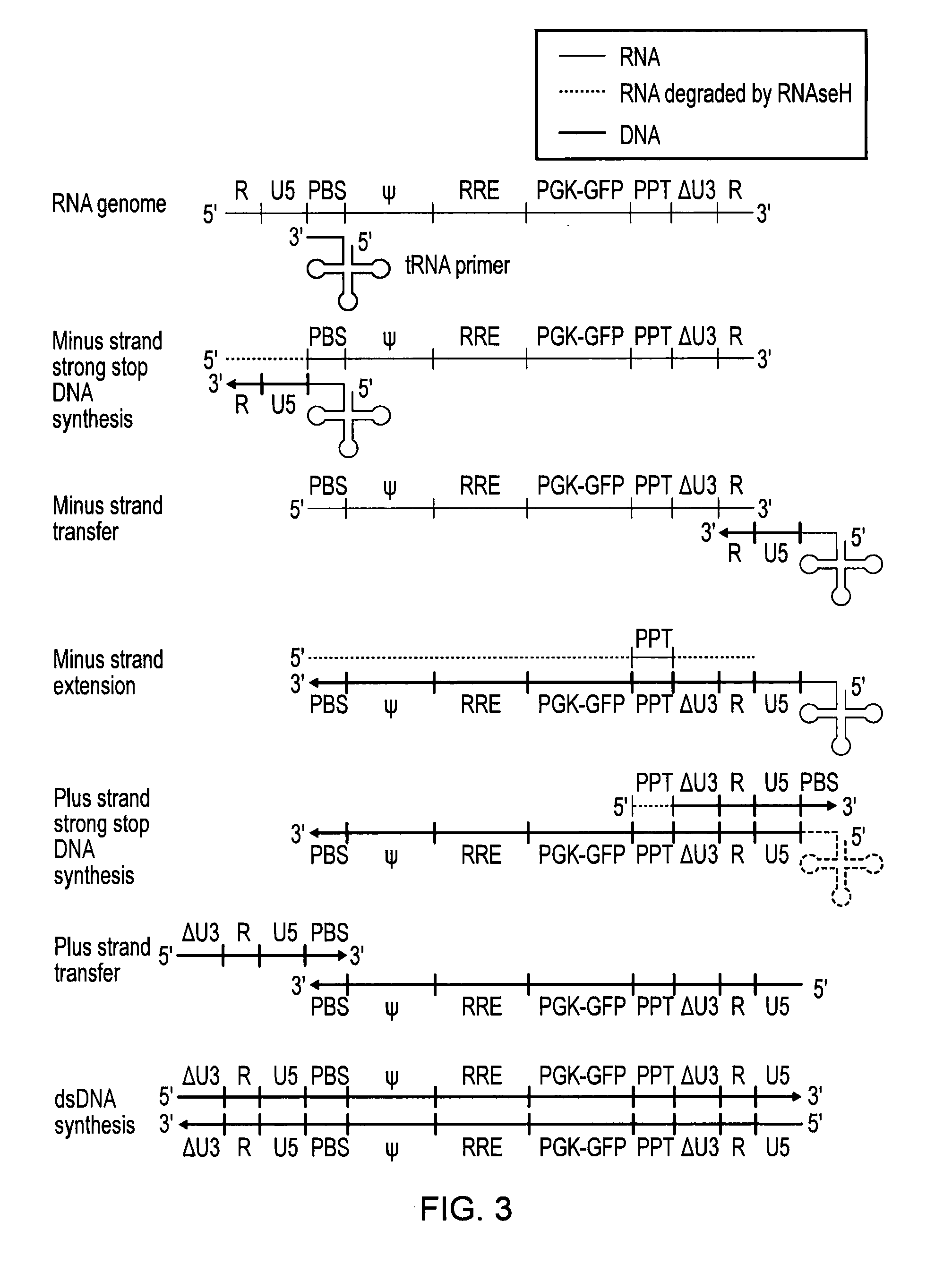Retroviral vectors
a technology of retroviral vectors and vectors, applied in the field of retroviral vectors, can solve the problems of reducing the size of reverse transcripts, unable to efficiently transcribe their full genome in target cells, and unable to achieve lentiviral vector transgene carrying capacity, so as to reduce the disadvantages of cis elements of transfer vectors and the effect of reducing the disadvantages of cis elements
- Summary
- Abstract
- Description
- Claims
- Application Information
AI Technical Summary
Benefits of technology
Problems solved by technology
Method used
Image
Examples
Embodiment Construction
[0070]Summary
[0071]Lentiviral transfer vector cis elements such as the HIV-1 RNA packaging signal (Ψ) and Rev Response Element (RRE) are essential for viral RNA genome packaging into virions in producer cells. In standard lentiviral vectors, these cis elements are reverse transcribed into DNA along with the transgene expression cassette and persist in target cells after transduction. This persistence creates several known and potential problems for lentiviral vector gene therapy applications. Splice sites within cis elements have been shown to splice with nearby host genes, creating aberrant fusion transcripts. The CpG island within the RNA packaging sequence undergoes DNA methylation in some target cells, potentially contributing to transgene silencing. The RNA packaging sequence also enables remobilisation of lentiviral vector genomes in cells expressing lentiviral proteins, which could be problematic in HIV-positive patients. Large packaging sequences within the reverse transcrip...
PUM
| Property | Measurement | Unit |
|---|---|---|
| Composition | aaaaa | aaaaa |
Abstract
Description
Claims
Application Information
 Login to View More
Login to View More - R&D
- Intellectual Property
- Life Sciences
- Materials
- Tech Scout
- Unparalleled Data Quality
- Higher Quality Content
- 60% Fewer Hallucinations
Browse by: Latest US Patents, China's latest patents, Technical Efficacy Thesaurus, Application Domain, Technology Topic, Popular Technical Reports.
© 2025 PatSnap. All rights reserved.Legal|Privacy policy|Modern Slavery Act Transparency Statement|Sitemap|About US| Contact US: help@patsnap.com



